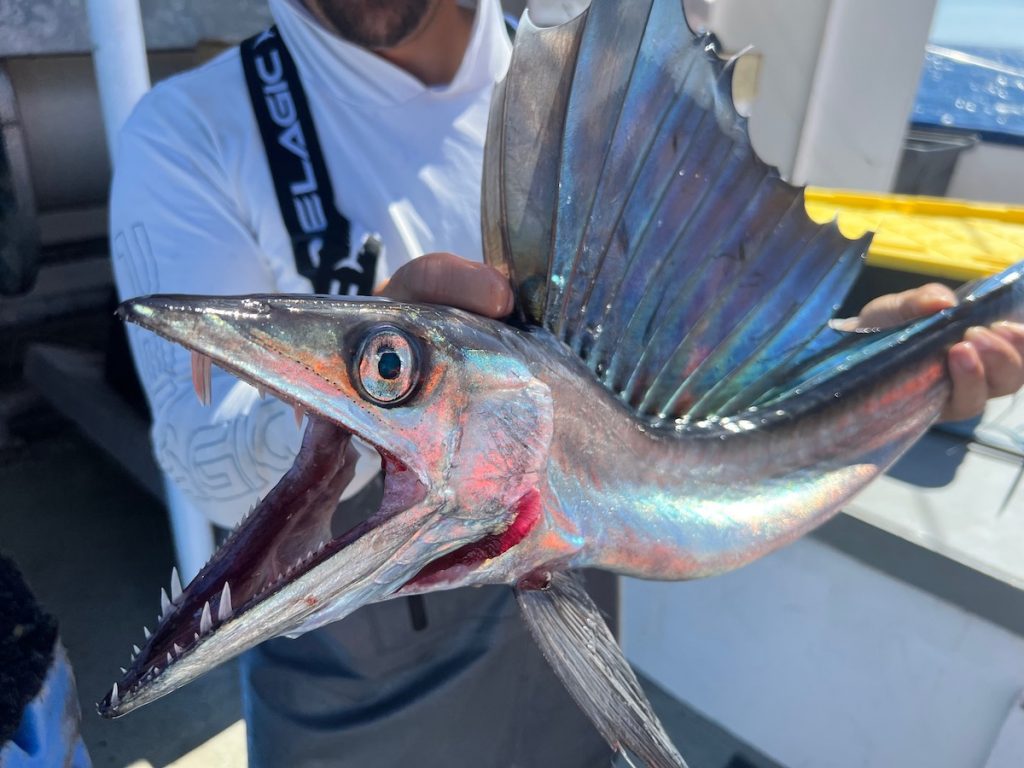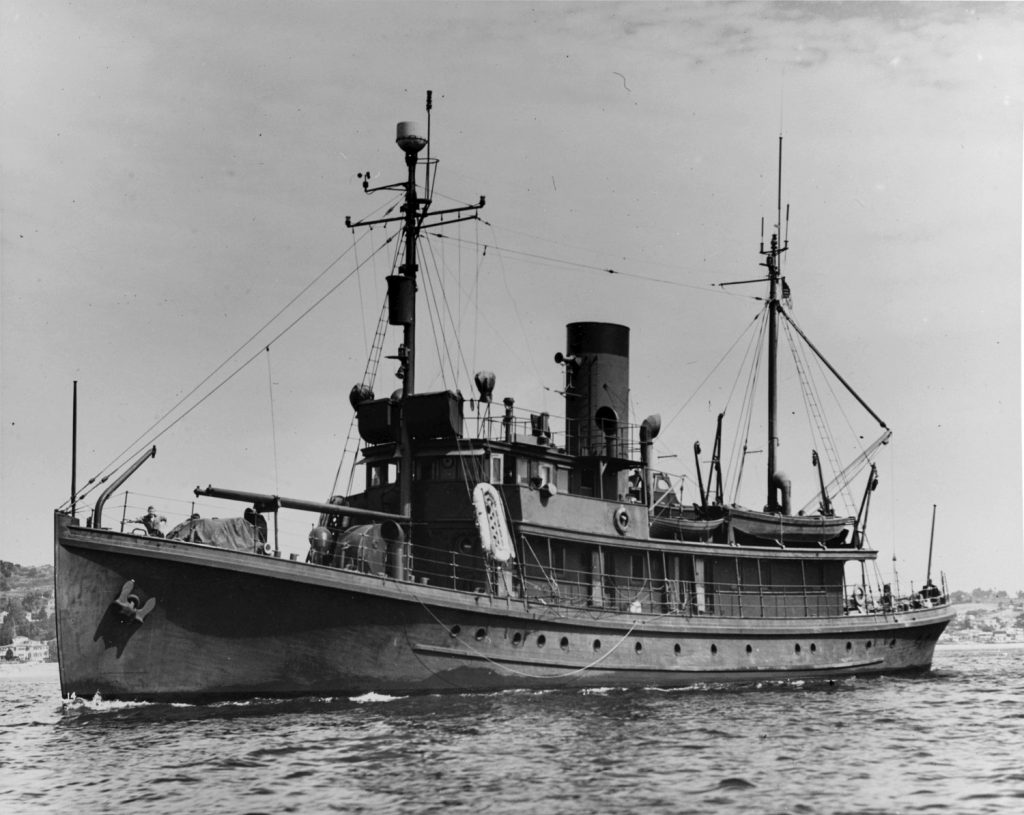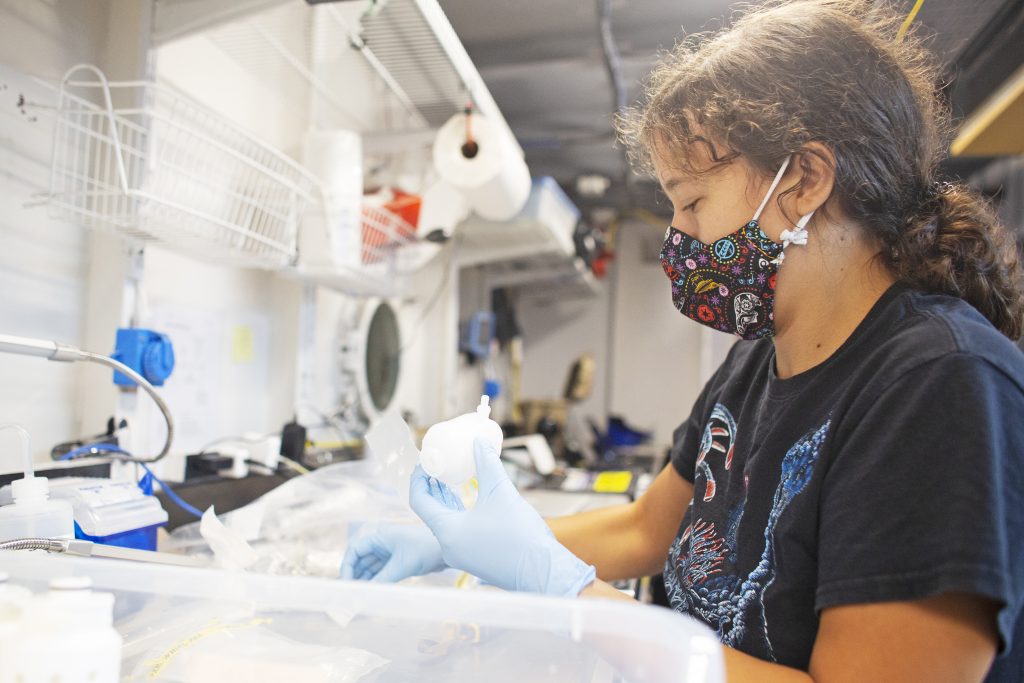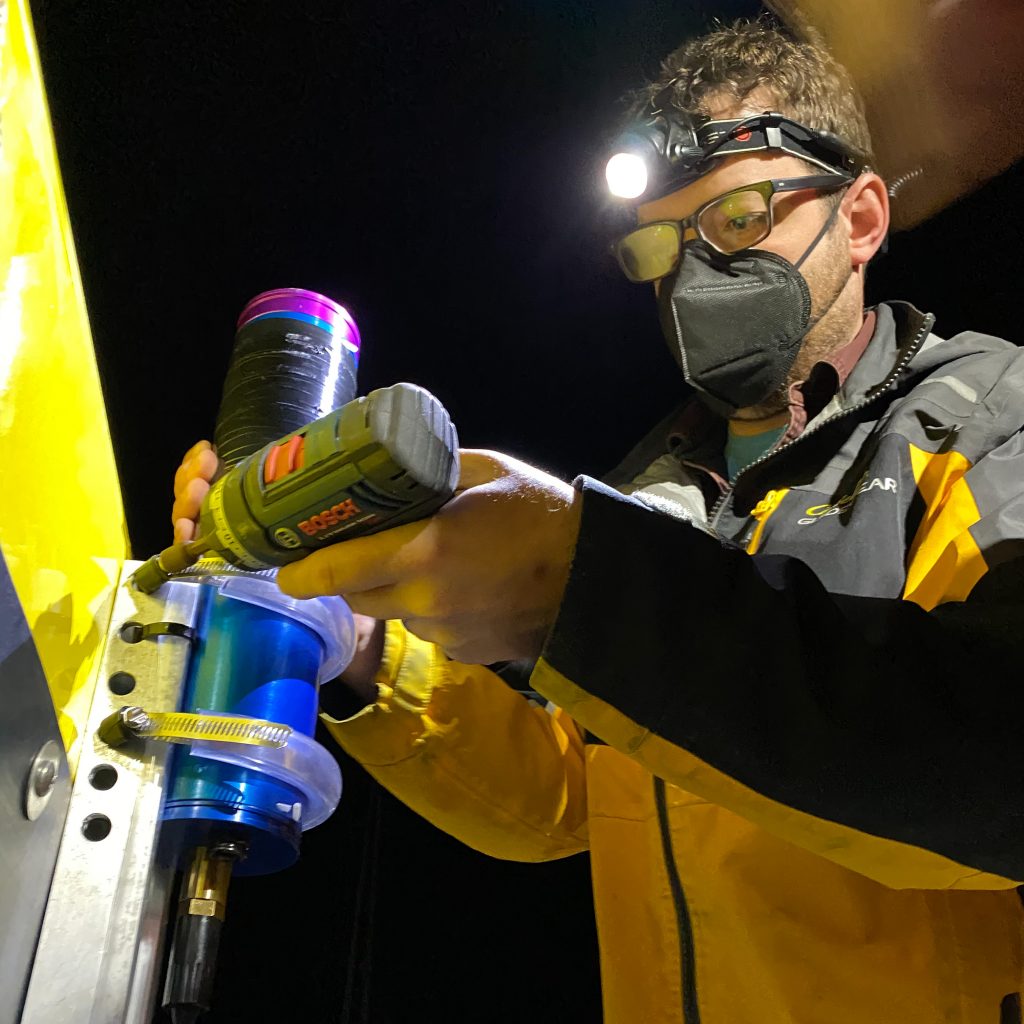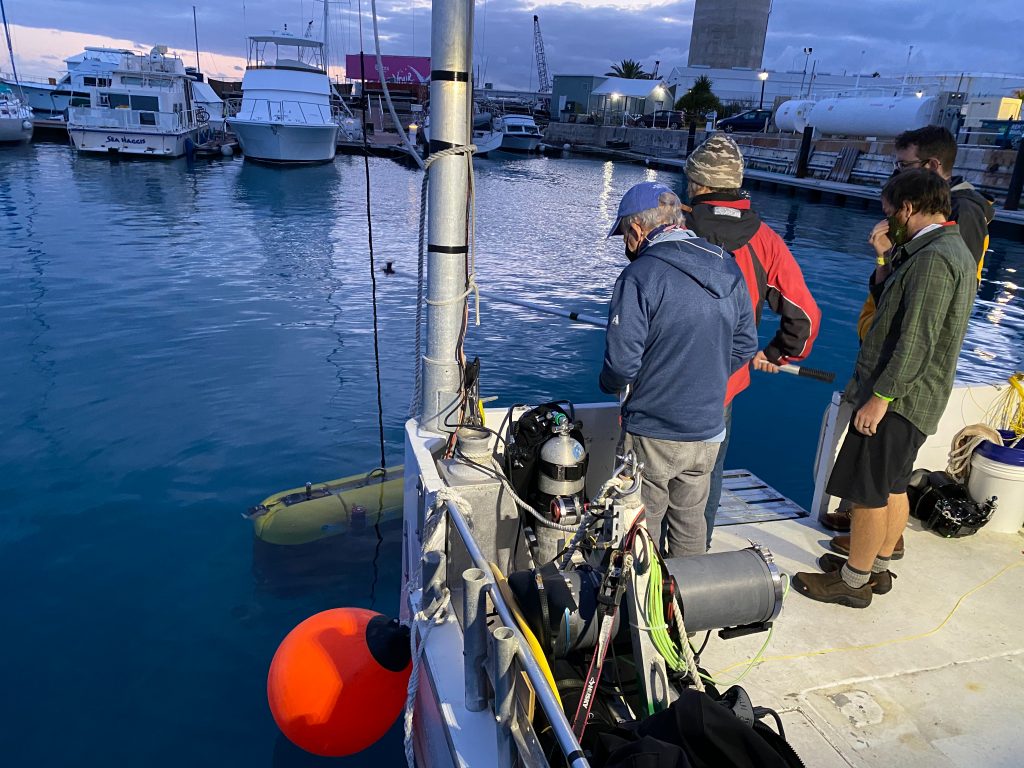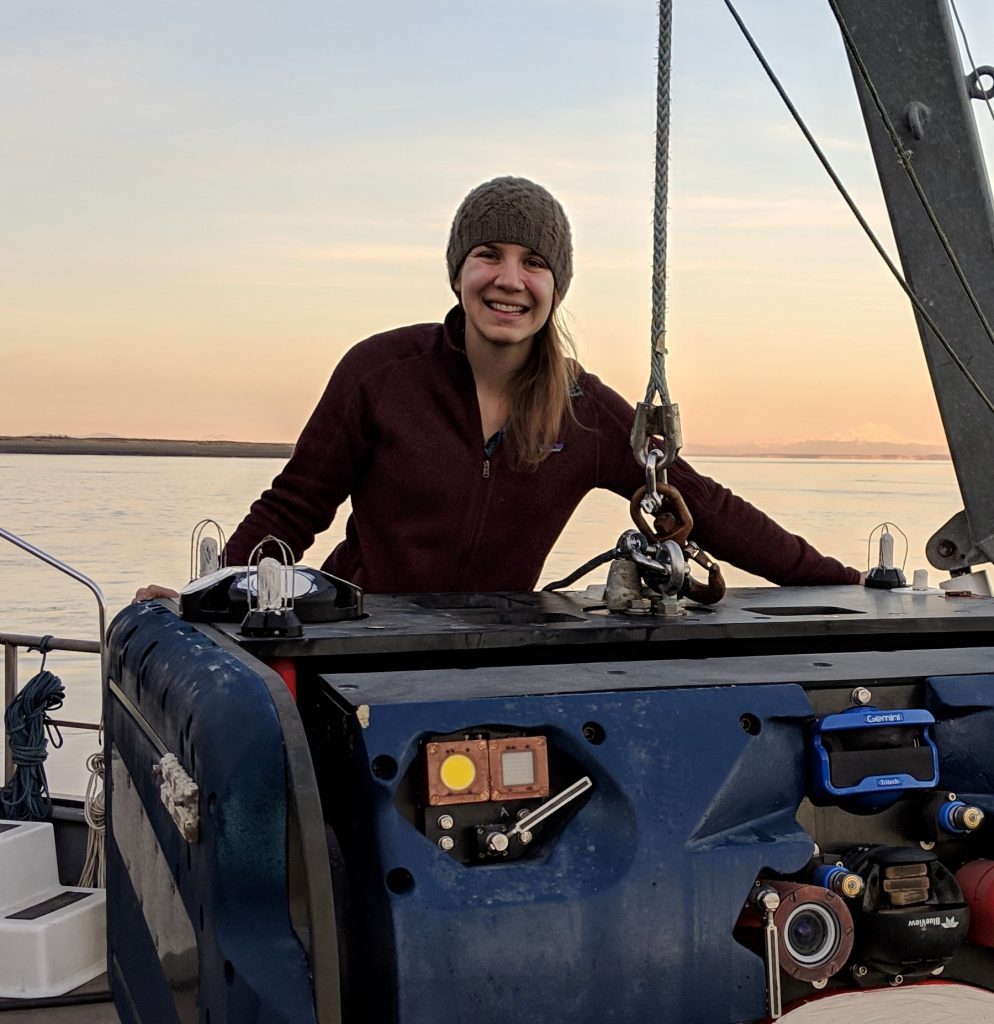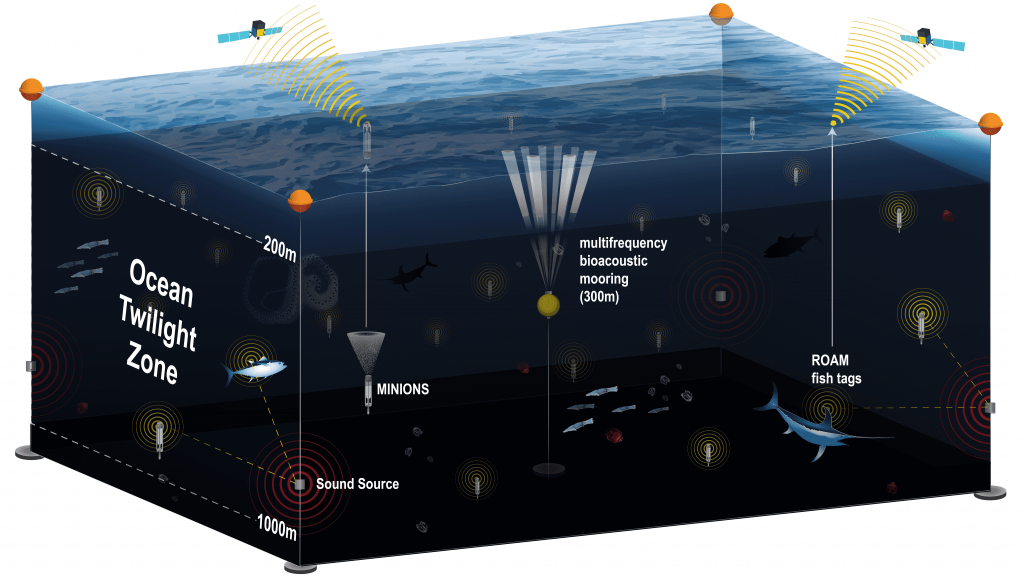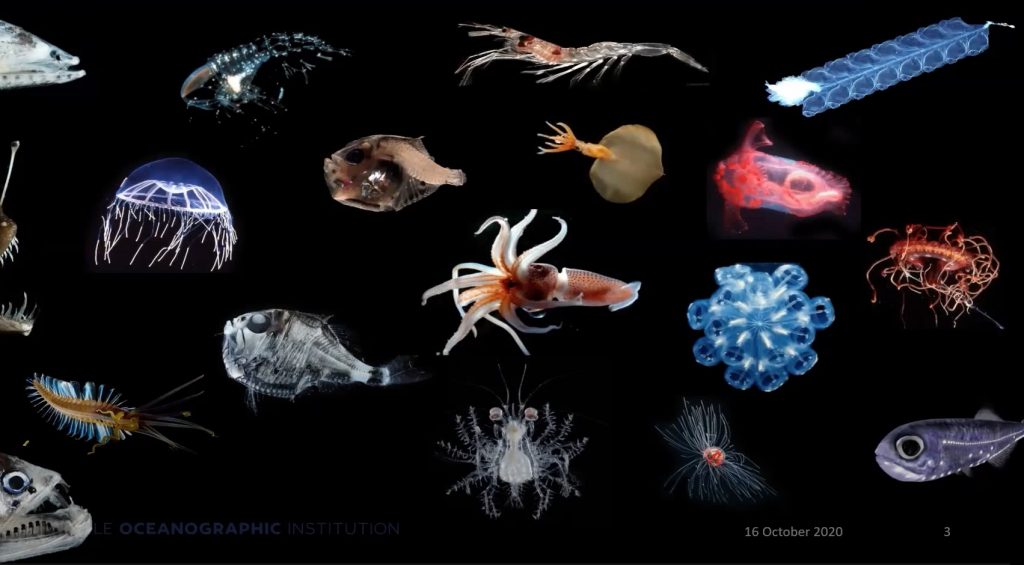Research
Casting a (long) line to the twilight zone food web
By Elise Hugus Sunrise view from the deck of F/V Monica, a commercial longliner that Ocean Twilight Zone project scientists…
Read MoreThe Mysterious “False Bottom” of the Twilight Zone
The USS Jasper (PYc-13) as it appeared in 1945—just a few years after scientists discovered the first evidence of the…
Read MoreEfficiency and Ease at Sea
WHOI research assistant Erin Frates processes a batch of samples in the Wet Lab after a Mesobot dive on September…
Read MoreCounting fish—with sound
Acoustic measurements from a ship and an underwater robot help scientists estimate how many fish are in the twilight zone.…
Read MoreField Notes: Catching Light
Research Technician Fredrick Marin attaches a highly-sensitive radiometer to Mesobot. Credit: Jennifer Berglund Since Mesobot arrived in Bermuda, it’s been…
Read MoreField Notes: Testing Mesobot in Seawater
Dispatches from Bermuda By Tuesday, March 10, OTZ engineers had Mesobot working properly on land, which meant it was time…
Read MoreField Notes: A Frustrating Wait
Dispatches from Bermuda The OTZ engineering team—all of whom spent two weeks in quarantine in Bermuda—has been working tirelessly to…
Read MoreSpotlight: Emma Cotter
WHOI engineer Emma Cotter with the Adaptable Monitoring Package, an instrumentation platform developed at the University of Washington for environmental…
Read MoreTwilight Zone Observation Network Funded
A new observation network will give scientists a comprehensive view of the twilight zone, or mesopelagic. It will use several…
Read MoreUpdate: OTZ Biomass
What is biomass, and why is it so important for understanding the ocean twilight zone? In order to fully understand…
Read More






